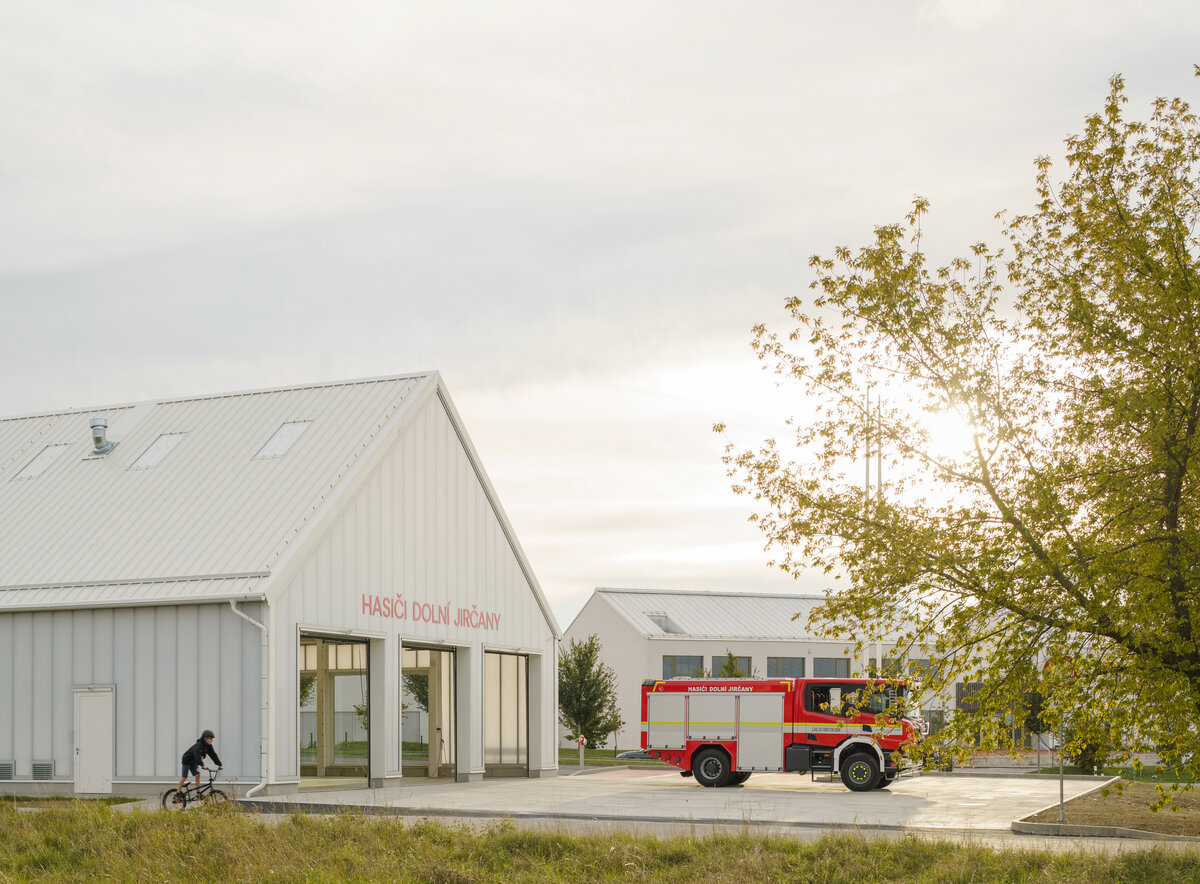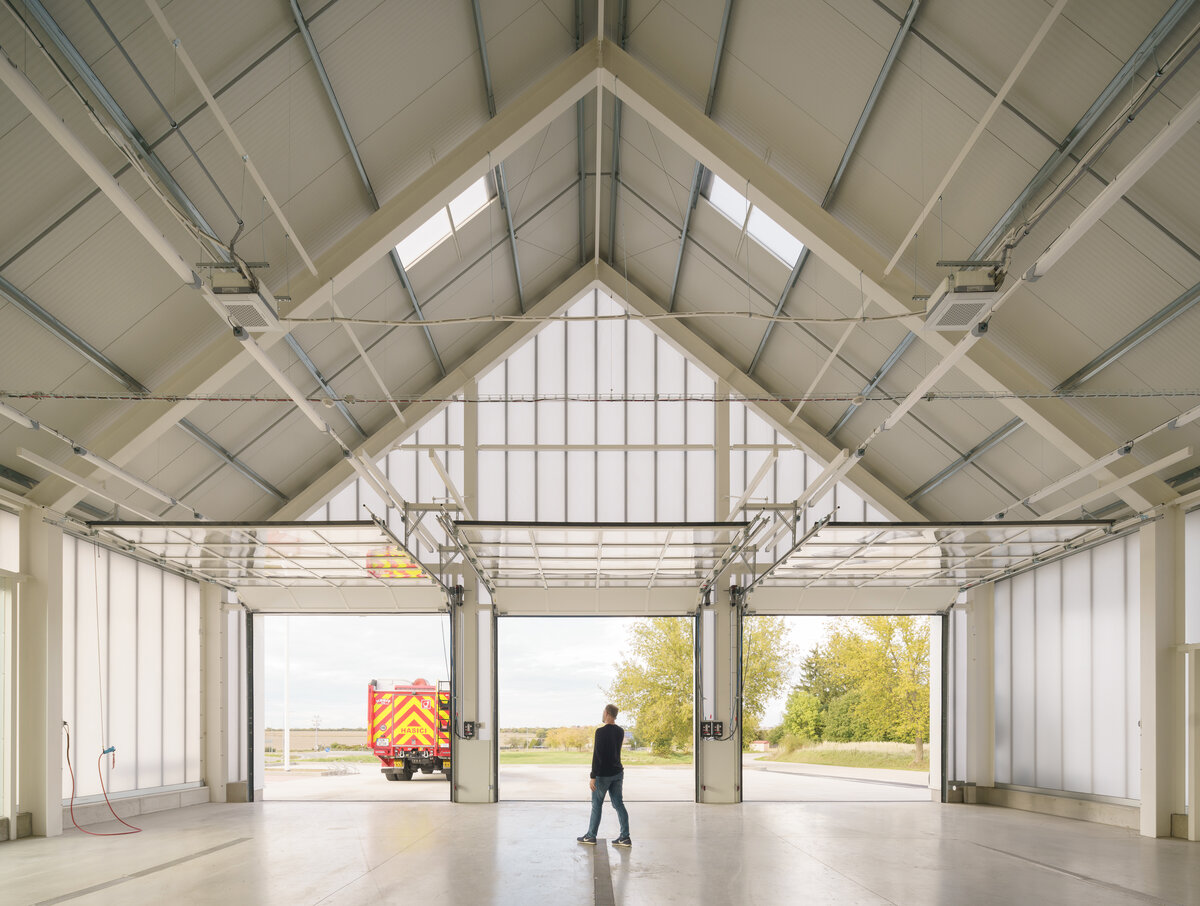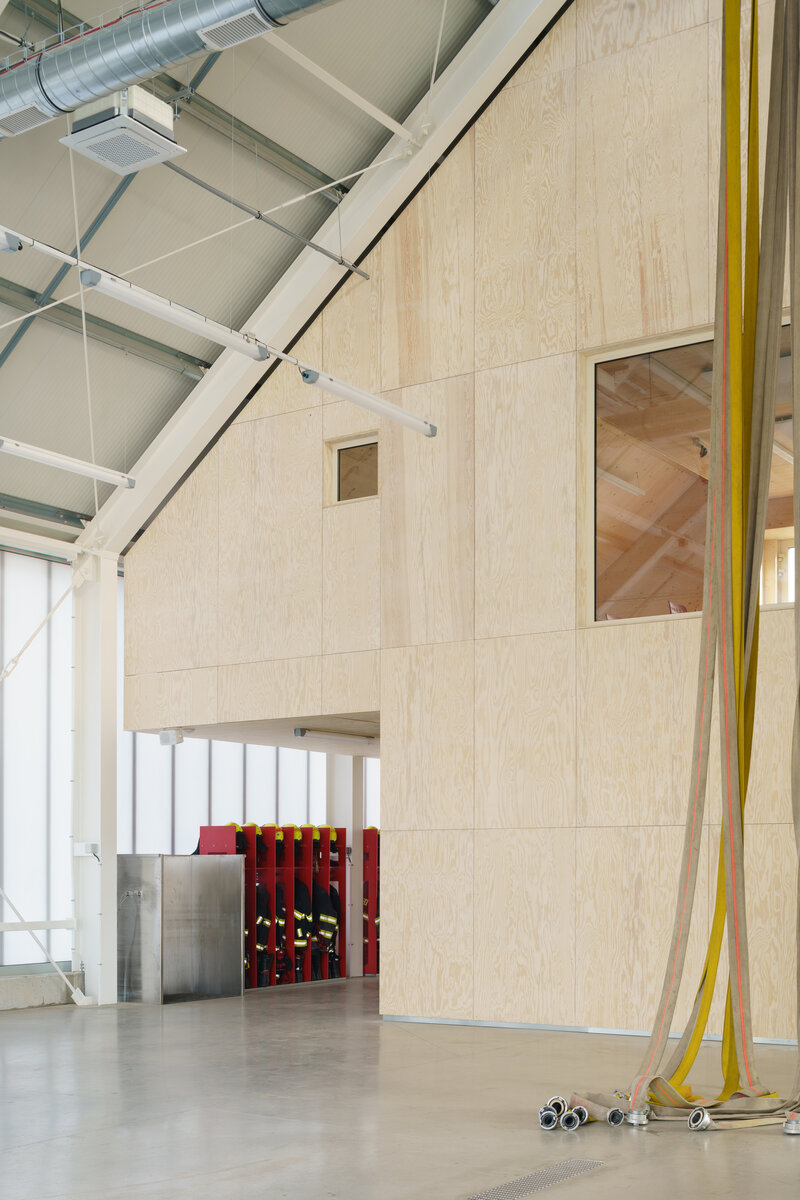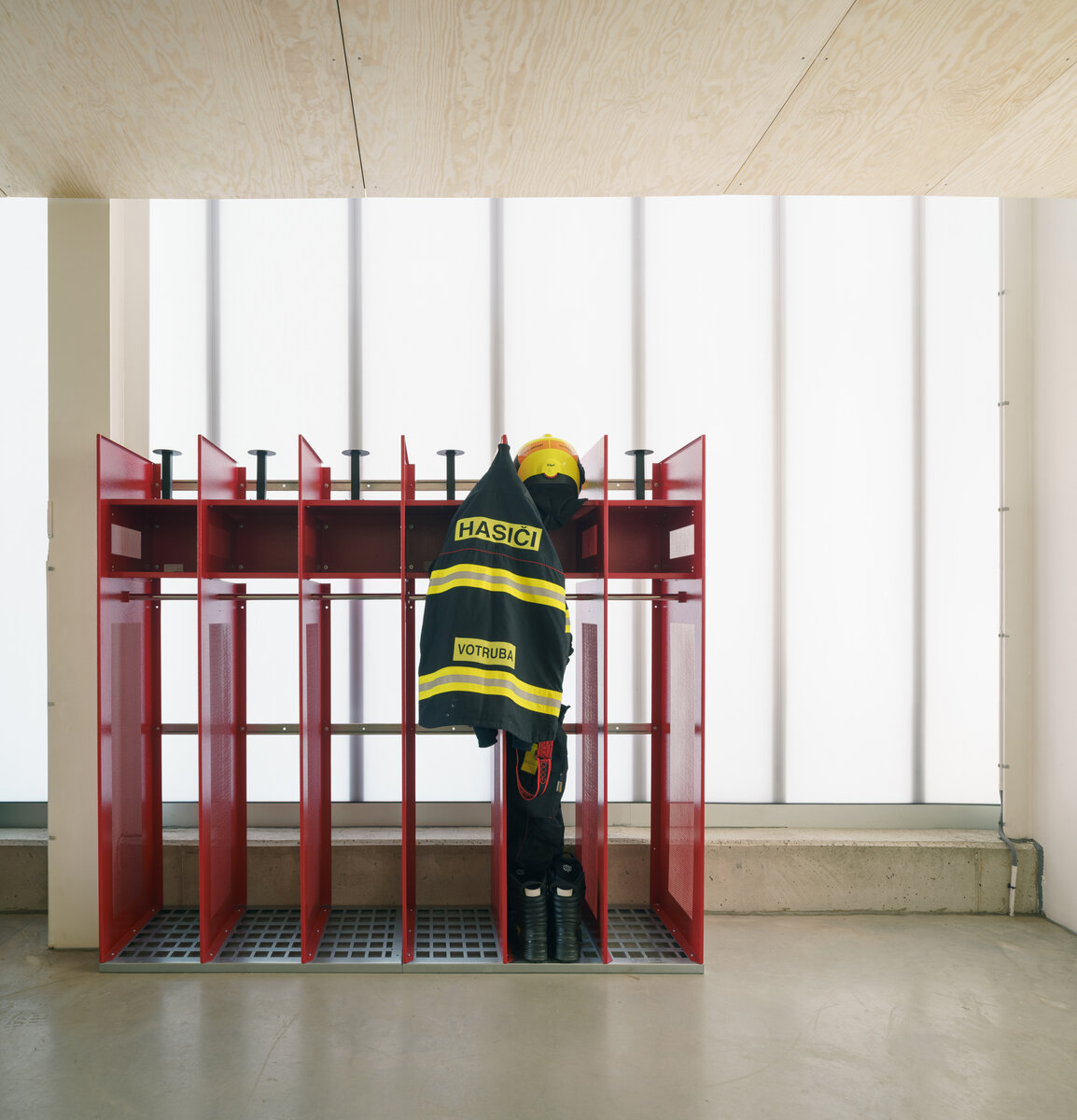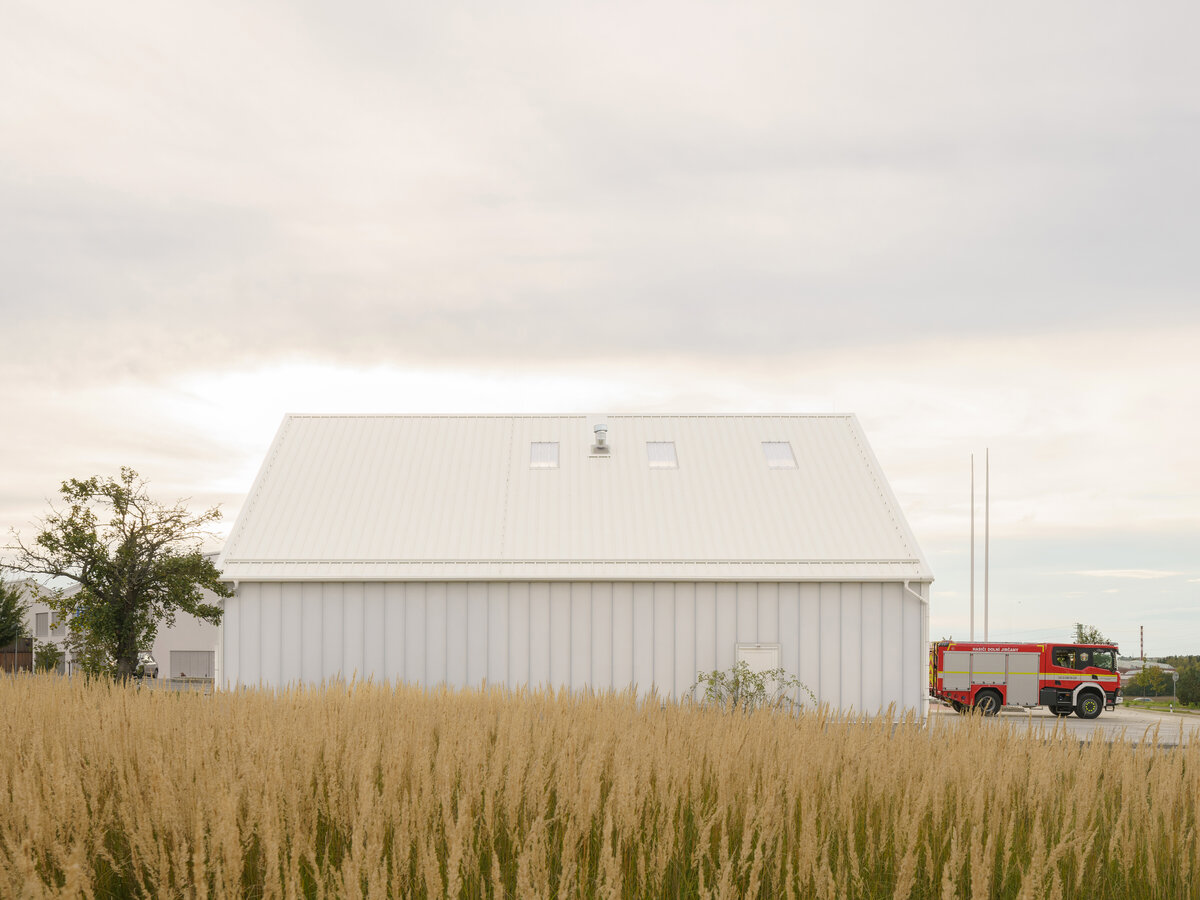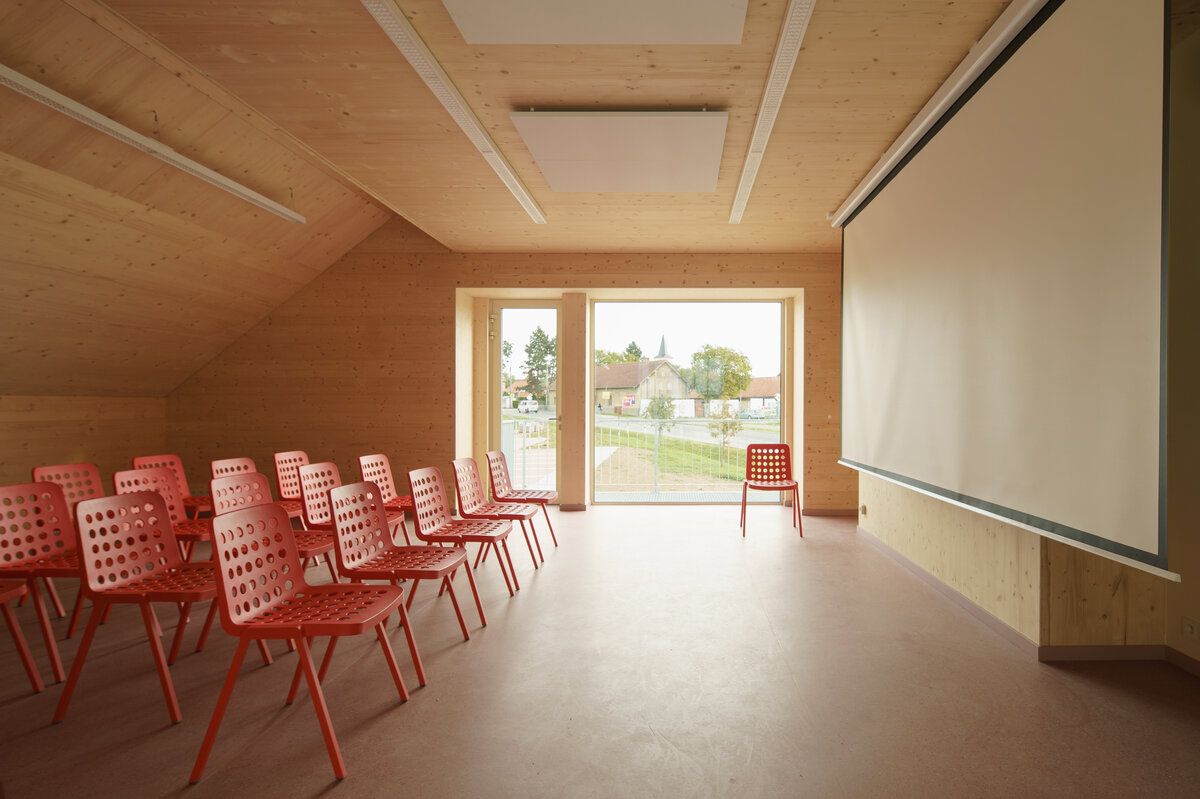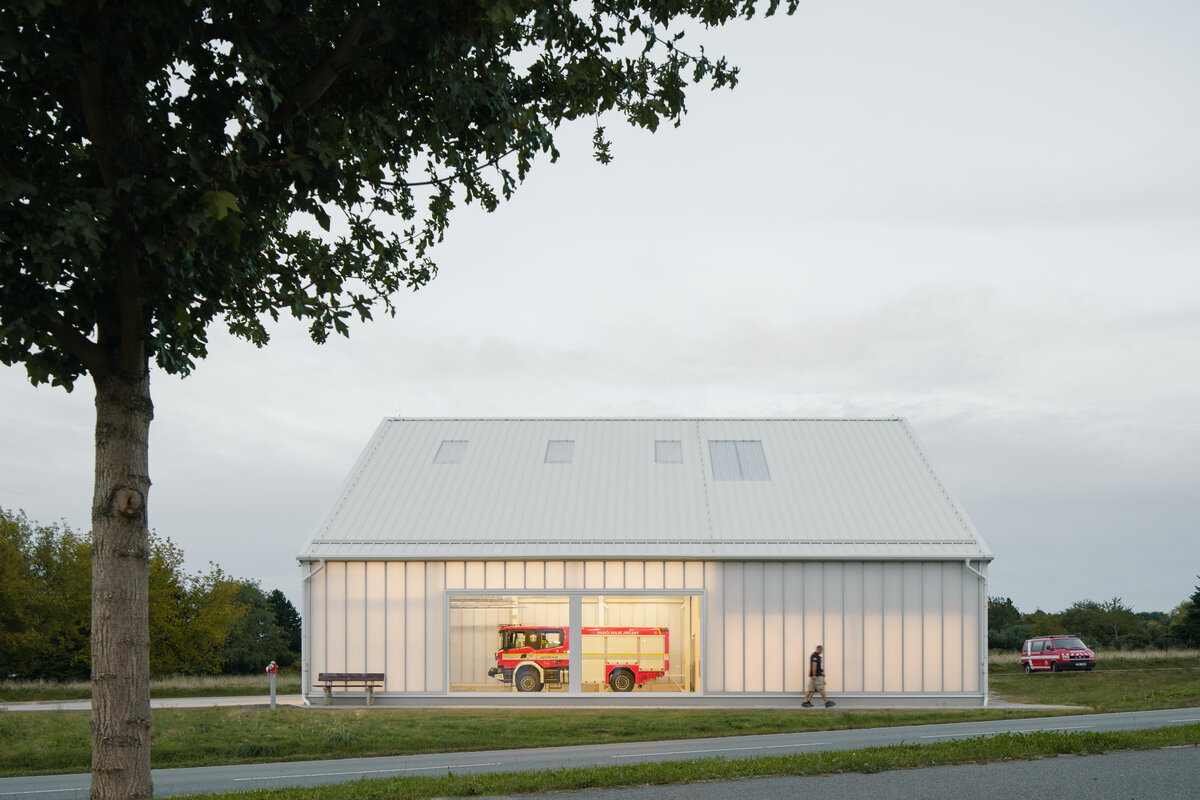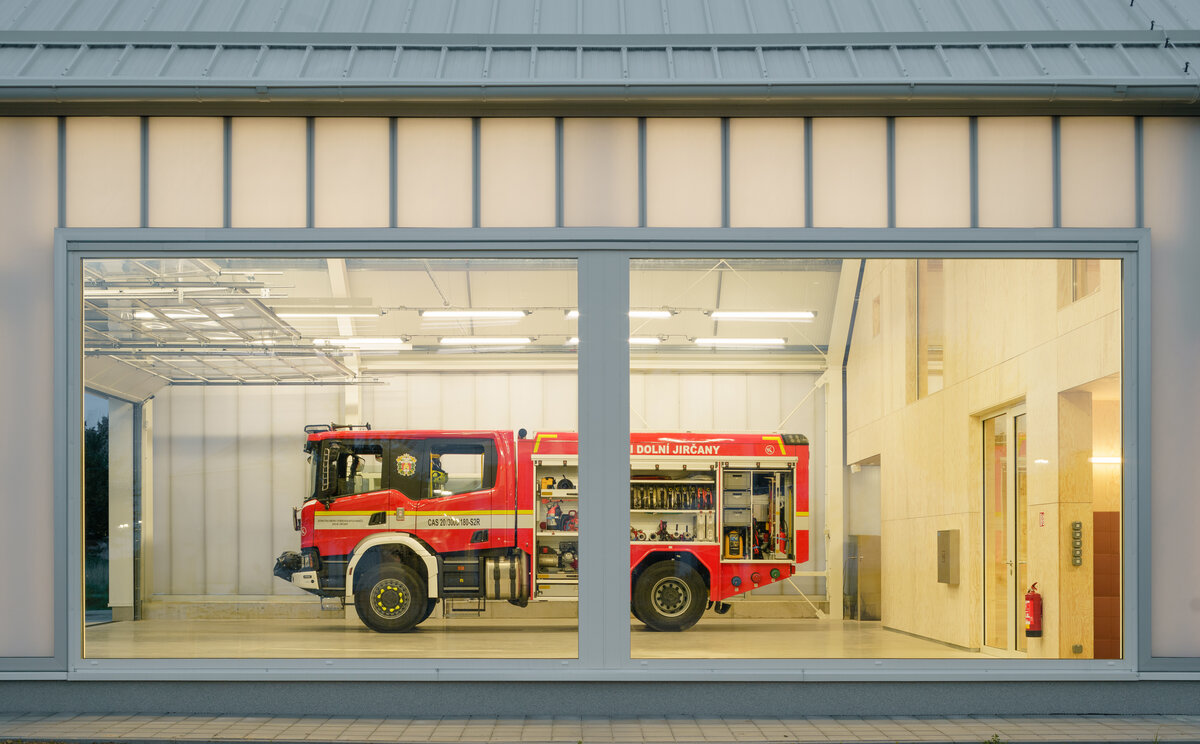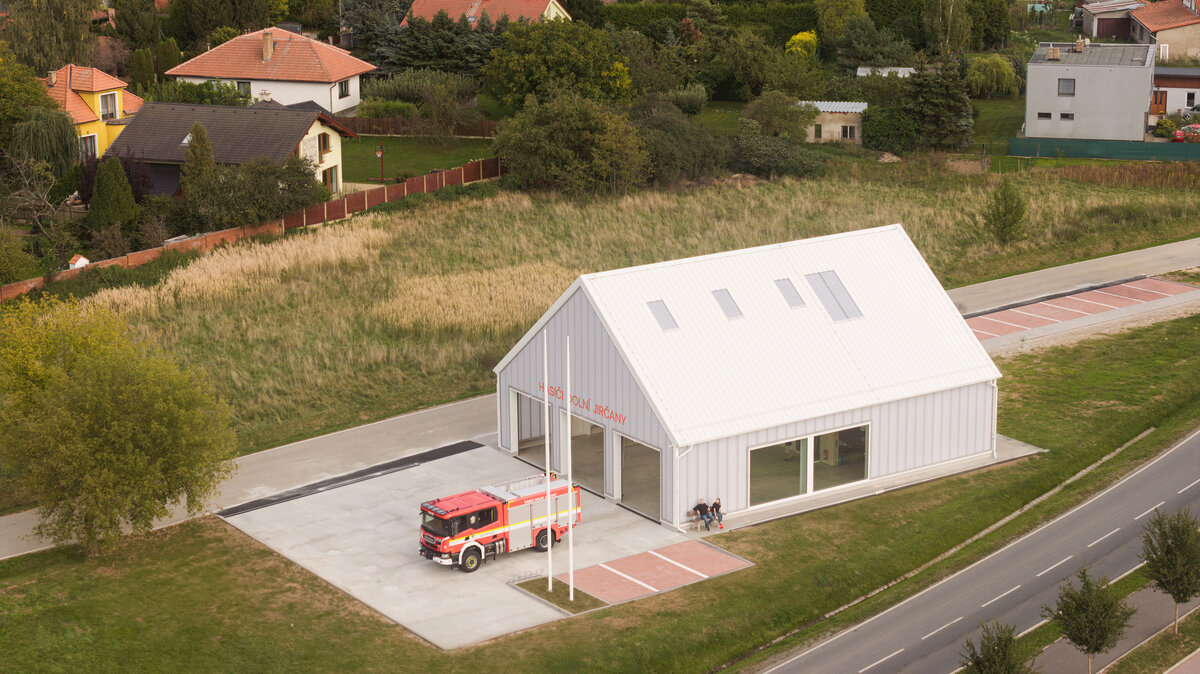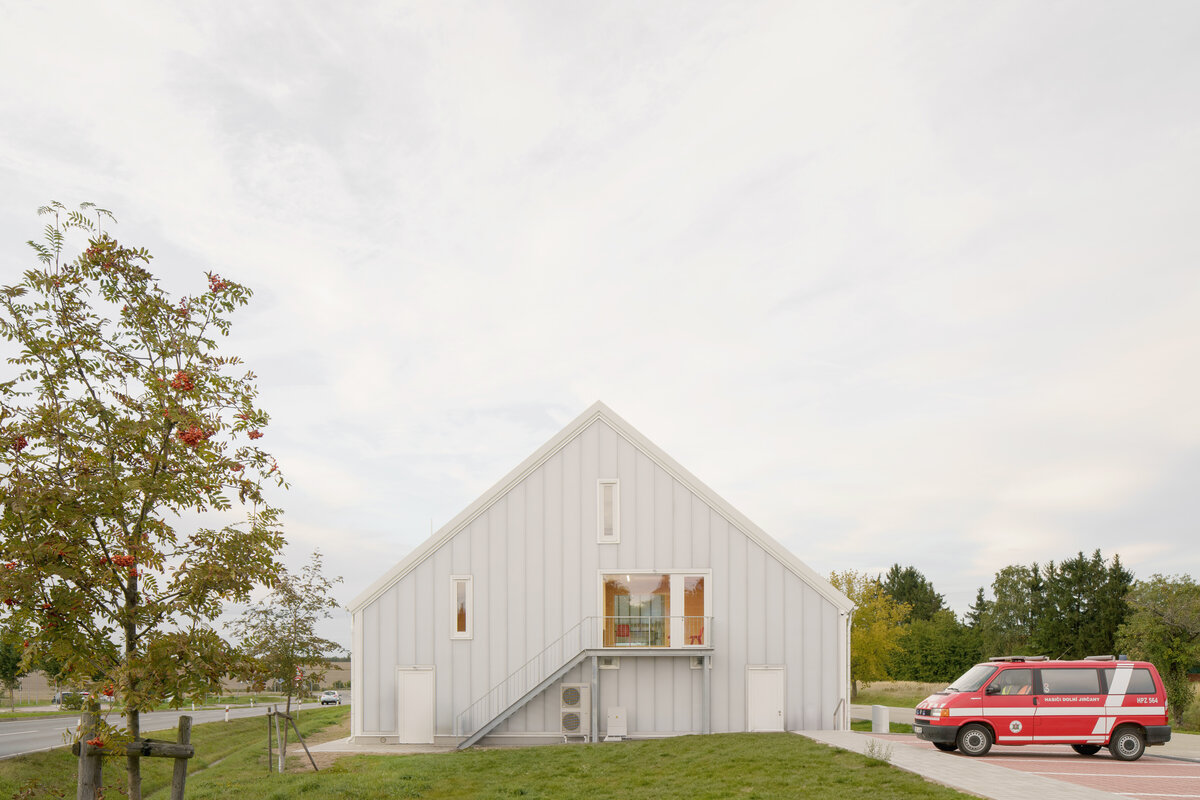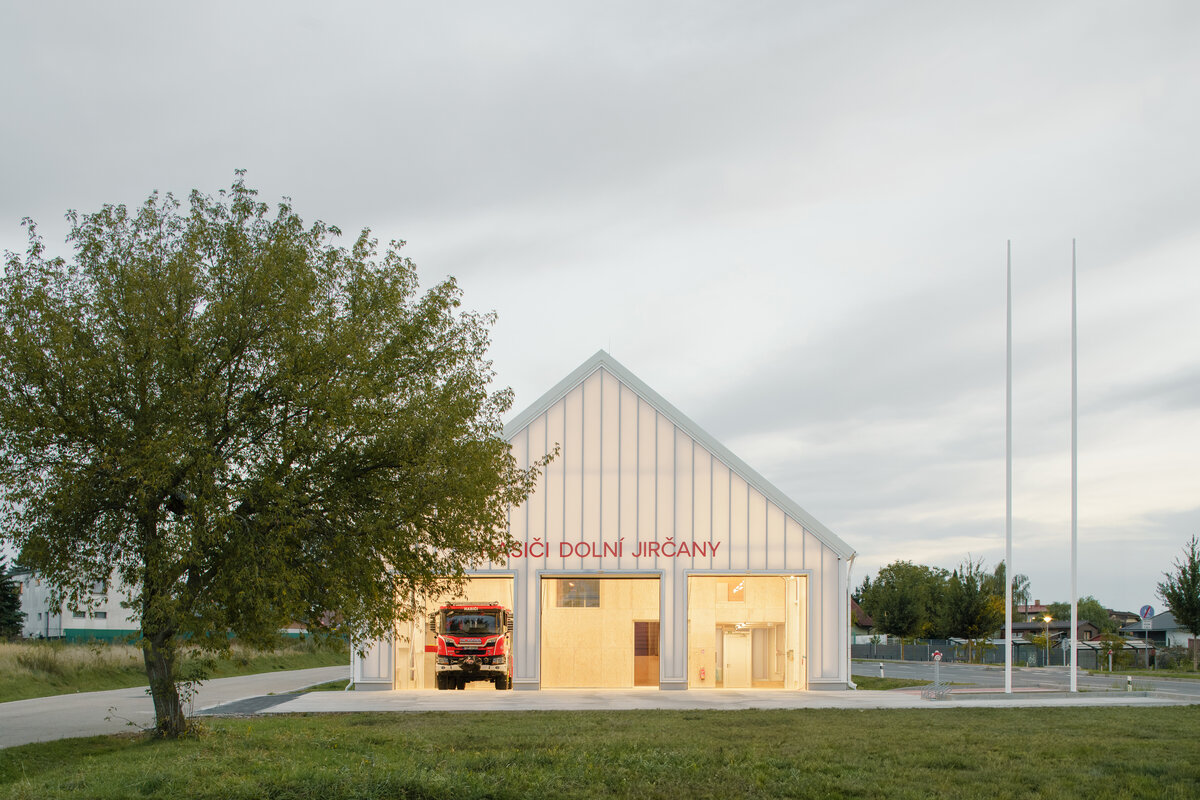| Author |
Ondřej Píhrt, Štefan Šulek, Ondřej Laciga, Kateřina Luftová, Štěpán Tomš, Marie Hojná |
| Studio |
SOA Architekti |
| Location |
ul. Ke Křížku Obec Psáry, 252 44 Psáry Česká republika |
| Collaborating professions |
Statika | A2 Timber, Václav Bártík PO | Jiří Jasný, Elektrotechnika | Jan Drašnar, TZB | Václav Heis |
| Investor |
Obec Psáry |
| Supplier |
Generální dodavatel | BW - Stavitelství, CLT - A2 Timber,
Fasáda | Danpalon, Kovové profily.,
Ocelová konstrukce |SteelPro4 |
| Date of completion / approval of the project |
August 2024 |
| Fotograf |
Alex Timpau |
The firehouse is designed in such a way that its shape and volume resembles the typology of rural barns. Its rectangular shape and gabled roof also create a visual connection to the elementary school across the street. It is located on municipal land in the northwestern development area of Dolní Jirčany. Its location on the outskirts of the village, with immediate access to transport infrastructure, provides the firefighters with a convenient location for quick and effective interventions.
The building stands on an almost triangular plot between family houses and a primary school. Its shape and height were designed to be sensitive to the surrounding development. It therefore fulfils not only a functional but also an aesthetic role - creating a symbolic transition between the character of the houses and the public character of the school.
From the first sketch, the design works with three different temperature zones exterior-garage-building. Their technical design and operational separation are an integral part of the architectural concept. The building is designed as a steel hall sheathed with a translucent polycarbonate facade, into which a "light" wooden building is independently placed. The polycarbonate façade provides a visual connection to the exterior and protection of the firefighting vehicles from the elements. The integrated wooden structure serves as a back-up for the firefighters. On the eastern façade of the garage, a large window is deliberately placed facing the street so that passers-by can get a glimpse of the functioning of the firehouse and get a closer look at the work of the volunteer firefighters.
The structure of the hall is steel framed with trusses and columns of rectangular section. The ventilation is provided by steel rods. The façade of the garage is formed by a polycarbonate wall system in the composition polycarbonate panel - air cavity with embedded thermal insulation - polycarbonate panel. The roof consists of sandwich polyurethane panels in the composition sheet - PUR - sheet. Above the garage area and staircase there are light panels in the roof.
To the light and transparent envelope of the firehouse, the solid and compact built-in structure is its counterweight. The horizontal and vertical structures of the building are made of CLT panels. On the interior side, the CLT panels are admitted postcard panels; on the exterior side, towards the garage, the panels are insulated with wood-fibre boards and clad with pine plywood
Green building
Environmental certification
| Type and level of certificate |
-
|
Water management
| Is rainwater used for irrigation? |
|
| Is rainwater used for other purposes, e.g. toilet flushing ? |
|
| Does the building have a green roof / facade ? |
|
| Is reclaimed waste water used, e.g. from showers and sinks ? |
|
The quality of the indoor environment
| Is clean air supply automated ? |
|
| Is comfortable temperature during summer and winter automated? |
|
| Is natural lighting guaranteed in all living areas? |
|
| Is artificial lighting automated? |
|
| Is acoustic comfort, specifically reverberation time, guaranteed? |
|
| Does the layout solution include zoning and ergonomics elements? |
|
Principles of circular economics
| Does the project use recycled materials? |
|
| Does the project use recyclable materials? |
|
| Are materials with a documented Environmental Product Declaration (EPD) promoted in the project? |
|
| Are other sustainability certifications used for materials and elements? |
|
Energy efficiency
| Energy performance class of the building according to the Energy Performance Certificate of the building |
B
|
| Is efficient energy management (measurement and regular analysis of consumption data) considered? |
|
| Are renewable sources of energy used, e.g. solar system, photovoltaics? |
|
Interconnection with surroundings
| Does the project enable the easy use of public transport? |
|
| Does the project support the use of alternative modes of transport, e.g cycling, walking etc. ? |
|
| Is there access to recreational natural areas, e.g. parks, in the immediate vicinity of the building? |
|
